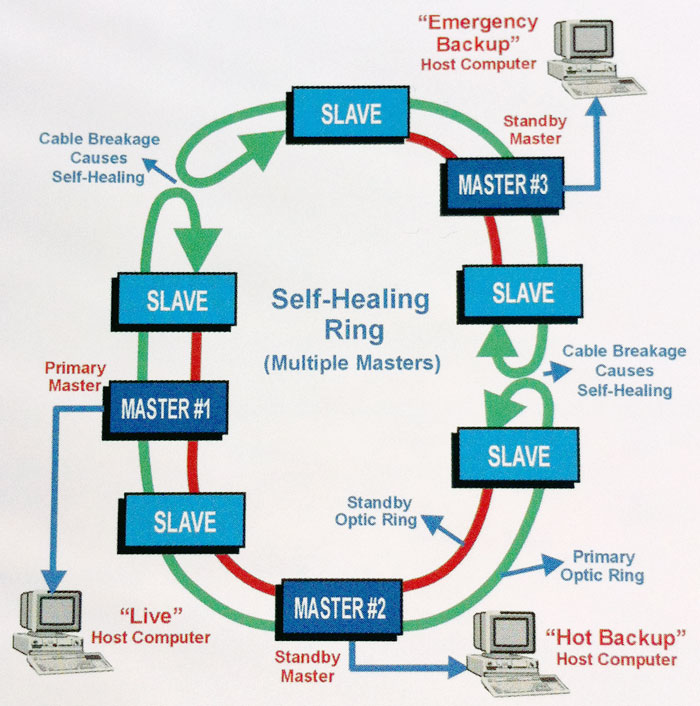How to Decide on a Fiber Optic Security System for Maximum Protection and Speed
How to Decide on a Fiber Optic Security System for Maximum Protection and Speed
Blog Article
The Ultimate Overview to Fiber Optic Security Systems for Your Business
In an era where protection worries are critical for businesses, recognizing the complexities of fiber optic technology can be transformative. This overview describes just how incorporating fiber optic security systems not just enhances information protection yet likewise offers advantages like resistance to interference and real-time tracking capabilities.
Recognizing Fiber Optic Technology

The core of a fiber optic cord contains a slim glass or plastic center, bordered by a cladding layer that shows light back right into the core. fiber optic security system. This style makes certain very little loss of signal toughness, even over considerable distances. There are 2 primary kinds of fiber optic cables: single-mode and multi-mode. Single-mode fibers are created for long-distance transmission, while multi-mode fibers are suitable for much shorter distances, typically made use of within buildings.
Optical fiber are not just quicker but likewise extra protected than typical wiring. Their intrinsic resistance to electro-magnetic interference and the difficulty of taking advantage of the signal without detection make them a recommended selection for companies prioritizing information honesty and security. As organizations increasingly depend on safe and reliable interaction systems, recognizing fiber optic technology becomes vital for educated decision-making.
Secret Benefits of Fiber Optic Protection
When considering safety alternatives for an organization, the benefits of fiber optic systems are specifically engaging. Firstly, fiber optic modern technology supplies exceptional data transmission speeds and data transfer ability, making it excellent for taking care of high-resolution video clip feeds from security cams. This capacity makes sure that safety personnel receive real-time information, improving overall response times to possible safety risks.
Moreover, fiber optic wires are naturally resistant to electro-magnetic interference, which can compromise the stability of conventional copper-based systems. This resistance ensures that the information transferred continues to be safe and continuous, providing a much more dependable security facilities. Additionally, optical fiber are less prone to physical damage, as they are made from glass as opposed to metal, lowering maintenance prices and downtime.
Another substantial benefit is the boosted scalability of fiber optic systems. As business requirements evolve, fiber networks can be quickly increased to fit added safety and security tools without significant overhauls to the existing facilities. Ultimately, fiber optic systems provide boosted cybersecurity features, including security capabilities that safeguard delicate data from unauthorized accessibility. Jointly, these benefits make fiber optic safety and security systems a durable selection for businesses seeking to enhance their safety actions.
Installation Process and Considerations
Considering the complexities involved, the installation process of fiber optic security systems requires careful planning and implementation. The preliminary step includes an extensive website assessment to identify optimum locations for cabling and devices. This evaluation ought to consider environmental variables, existing infrastructure, and potential vulnerabilities.

Additionally, the installation needs to adhere to local structure codes and sector standards. This might include coordinating with different stakeholders my response such as building managers, IT teams, and safety and security workers to make sure smooth assimilation with existing systems.
Post-installation, strenuous screening is essential to verify system efficiency and recognize any problems that might occur. By prioritizing these considerations throughout the setup procedure, businesses can make certain a durable and efficient fiber optic safety and security system that fulfills their details safety needs.
Most Current Technologies in Fiber Optic Safety And Security
Recent improvements in fiber optic modern technology have dramatically boosted the capacities of security systems for businesses. One of the most significant technologies is the integration of fiber optic sensors that can find vibrations and invasions along the perimeter of a facility. These sensors supply real-time monitoring, enabling rapid reaction to potential violations.
Furthermore, the advancement of dispersed fiber optic noticing technology enables for the continual surveillance of large locations with a solitary fiber cord. This method not just decreases setup costs but additionally boosts the dependability of keeping an eye on systems by getting rid of the need for multiple, different sensing units.
Moreover, developments in multiplexing methods have enabled companies to transmit large quantities of data over fiber optic networks, enhancing the capabilities of video monitoring systems. High-def video feeds can now be sent over fars away without loss of quality, guaranteeing that protection personnel have accessibility to clear and actionable info.
Last but not least, the usage of synthetic knowledge (AI) combined with fiber optic systems is reinventing danger detection. AI algorithms can examine data from fiber optic networks to determine unusual patterns or actions, permitting proactive security actions. These advancements collectively stand for a significant jump onward in fiber optic safety innovation.
Picking the Right System for Your Organization
Selecting the ideal fiber optic safety and security system for your organization is essential for guaranteeing optimum find more info defense and peace of mind. To make an informed selection, assess your details safety and security requirements, considering elements such as the size of your facilities, the nature of your operations, and prospective vulnerabilities.
Begin by assessing the degree of security called for; for instance, high-risk atmospheres may demand sophisticated systems with integrated surveillance and invasion discovery capacities. Next, consider scalability; as your company grows, your security system need to can expanding to suit boosted needs without substantial overhauls.
In addition, check out fiber optics infrastructure for security installations the reliability and efficiency of numerous systems. Seek carriers with well established track records and client testimonials that vouch for their solution quality. It's additionally recommended to ask about the technology's compatibility with existing framework, making certain a smooth integration process.
Conclusion
In conclusion, fiber optic safety and security systems provide a robust service for boosting service security facilities. The latest advancements even more boost the performance of these systems, making sure that services remain secure and versatile in an ever-evolving risk landscape.
Report this page